ANIMALS
Otterly Adorable: 23 Reasons Why Otters Are More Than Just Cute
Published
3 months agoon

Shutterstock
Otters are some of the animal kingdom’s most endearing and fascinating creatures. Known for their playful antics and remarkable adaptability, they have captured the hearts of nature lovers worldwide. From their impressive swimming skills to their use of tools, otters showcase intelligence and ingenuity in the wild. Beyond their charm, these animals play a crucial role in maintaining the balance of their ecosystems. Dive into these 23 captivating facts about otters and discover why they’re so much more than just adorable.
Incredible Swimmers
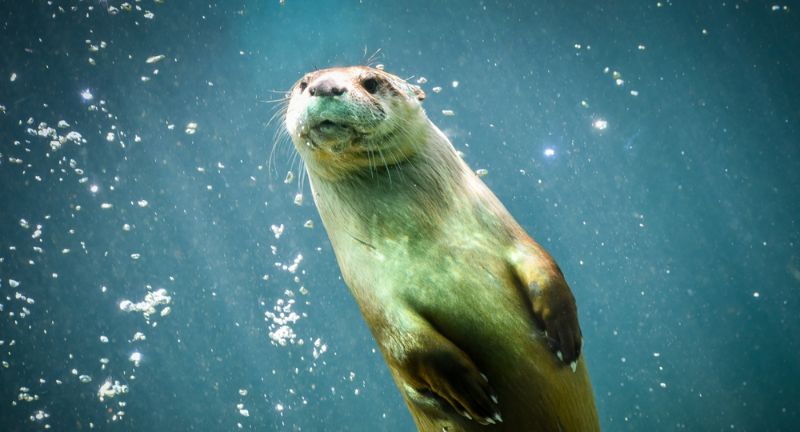
Shutterstock
Otters are masters of underwater movement, capable of holding their breath for up to 8 minutes. This remarkable ability allows them to dive to great depths in search of food such as fish and shellfish. Their streamlined bodies and webbed feet enhance their swimming prowess, making them agile hunters in aquatic environments. Whether gliding through rivers or coastal waters, otters are perfectly adapted for life beneath the surface.
Playful Animals
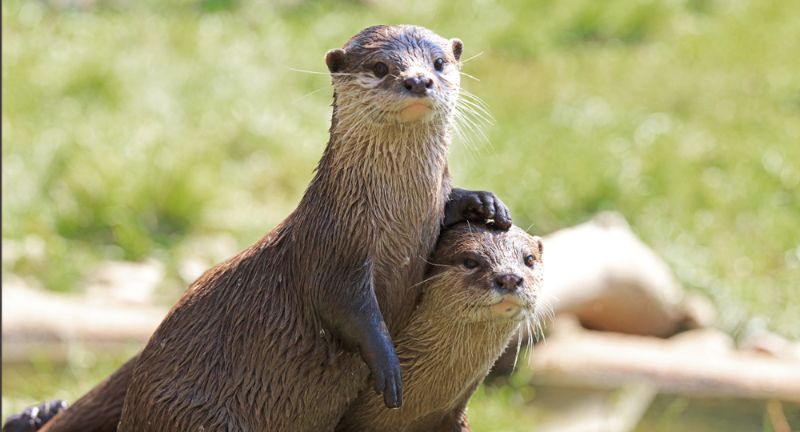
Shutterstock
Otters are famously playful creatures, delighting observers with their antics. They are often seen sliding down muddy slopes, snowbanks, or even making use of natural water slides just for fun. This playful behavior isn’t just for entertainment—it also helps young otters practice crucial survival skills. Their joy-filled interactions make otters a symbol of carefree living in the animal kingdom.
Tool Users
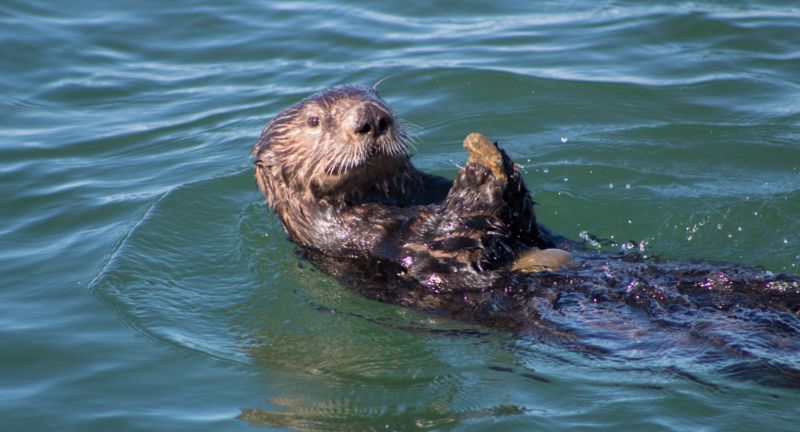
Shutterstock
One of the most remarkable traits of otters is their use of tools. They are one of the few non-primate animals known to use tools to assist in feeding. By using rocks to crack open shellfish, otters demonstrate both intelligence and resourcefulness. This behavior highlights their problem-solving abilities and adaptability in the wild.
Family Bonding
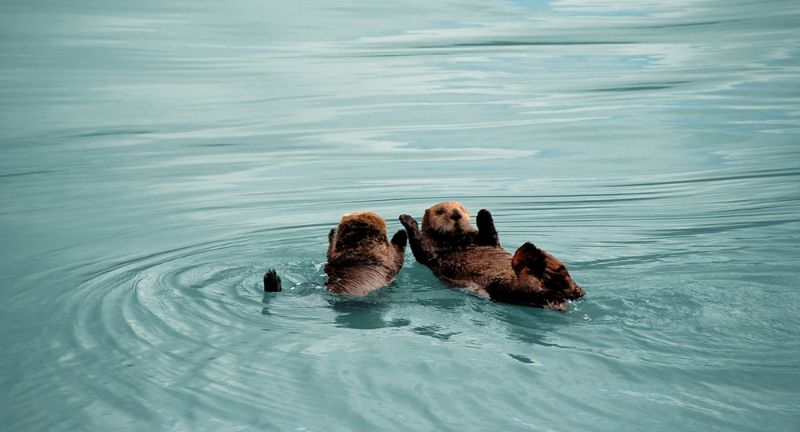
Shutterstock
Otters are highly social animals that form strong family bonds. A heartwarming behavior seen in sea otters is holding hands while resting in groups, called “rafts,” to avoid drifting apart. These groups can range from a few individuals to dozens, showcasing their close-knit nature. This endearing trait emphasizes their reliance on social structures for survival and comfort.
Dense Fur
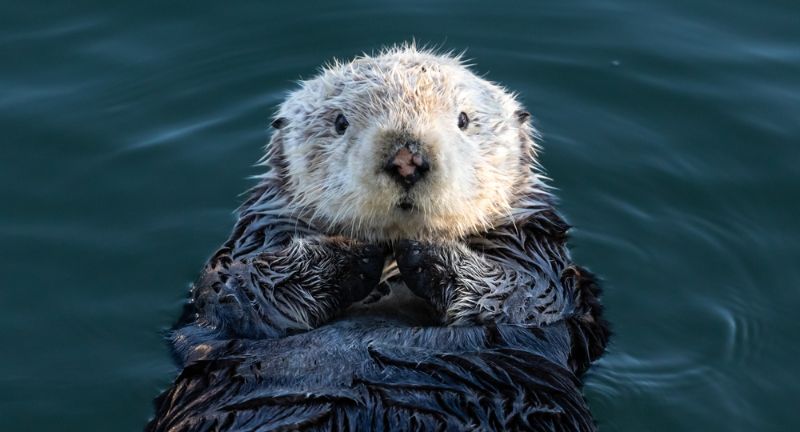
Shutterstock
Otters boast the densest fur in the animal kingdom, with up to a million hair strands per square inch. This luxurious coat is not just for show—it serves a vital function in keeping them warm in cold waters. Unlike many other marine mammals, otters lack blubber and rely on their dense fur for insulation. They spend a significant amount of time grooming to maintain its effectiveness and buoyancy.
Vibrant Ecosystem Role
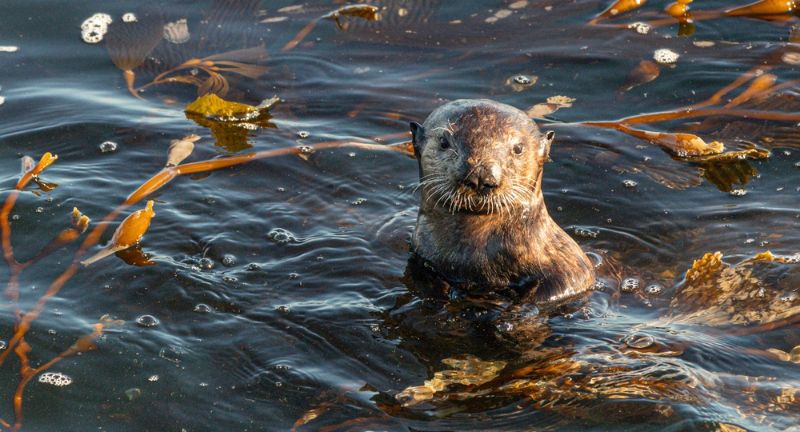
Shutterstock
Otters play a critical role in maintaining balanced ecosystems, particularly in rivers and kelp forests. As predators, they keep populations of fish and shellfish in check, preventing overpopulation. In kelp forests, sea otters control sea urchin populations, which can otherwise destroy these underwater habitats. Their presence is a sign of a healthy and thriving environment, making them vital to ecological stability.
High-Calorie Diet

Shutterstock
Otters have incredibly high metabolisms, requiring them to consume up to 25% of their body weight daily. Their diet typically includes fish, crustaceans, mollusks, and other aquatic creatures. This constant need for food keeps them active and always on the hunt. Their feeding habits are essential for sustaining their energy levels and supporting their active lifestyles.
Diverse Habitats

Shutterstock
Otters are a truly global species, found on every continent except Australia and Antarctica. They thrive in a variety of environments, including rivers, lakes, oceans, and wetlands. Each species has adapted to its specific habitat, whether it’s the icy waters of the Pacific Northwest or tropical rivers in Asia. This adaptability makes otters one of the most versatile mammals in the animal kingdom.
Parental Care

Shutterstock
Female otters are known for their attentive and nurturing parenting. They teach their pups essential survival skills, such as swimming, hunting, and grooming. Mothers carry their young on their bellies to keep them safe and warm, even while floating in the water. This strong maternal bond ensures the survival and growth of otter populations.
Distinct Calls
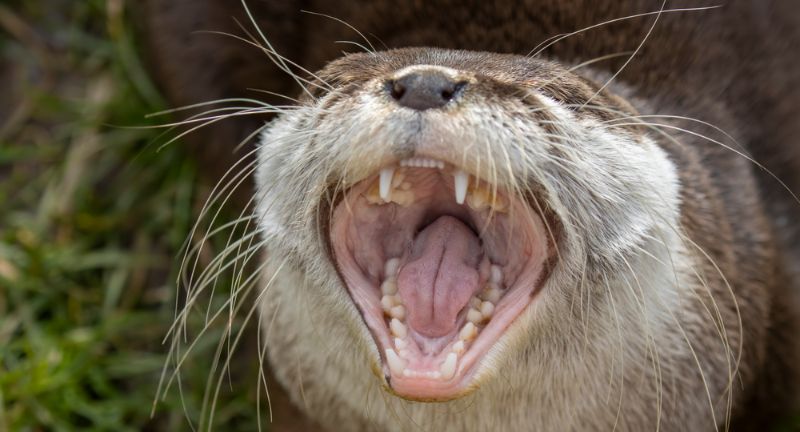
Shutterstock
Otters have a diverse range of vocalizations used to communicate with each other. From chirps and whistles to growls and screams, each sound conveys a specific message. These vocalizations are crucial for social interaction, warning of danger, or calling for help. Their unique “language” is a testament to their intelligence and social nature.
Aquatic Adaptations

Shutterstock
Otters have physical traits that make them perfect for life in the water. Their webbed feet act as natural flippers, and their long, muscular tails help propel them through the water. Their sleek, streamlined bodies minimize resistance, allowing them to move gracefully. These adaptations make them highly efficient swimmers, whether hunting or evading predators.
Vulnerable Species
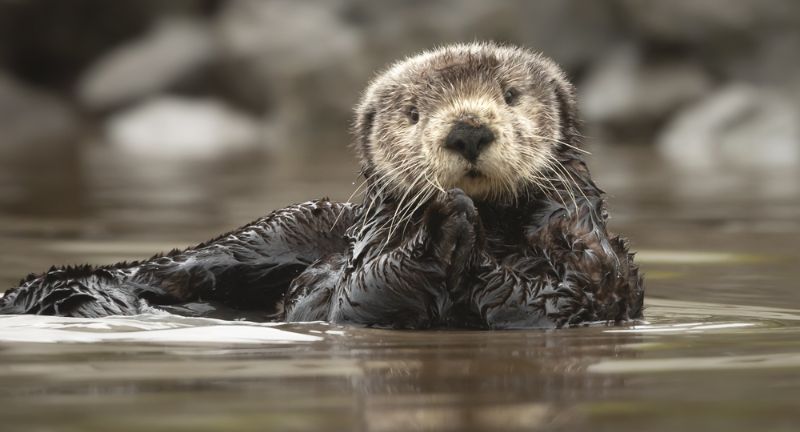
Shutterstock
Some otter species, like the sea otter, face significant threats due to habitat loss, pollution, and hunting. Oil spills and environmental degradation can severely impact their populations. Conservation efforts are underway to protect these species and restore their natural habitats. Ensuring their survival is critical for maintaining ecological balance and biodiversity.
Unique Fur Cleaning

Shutterstock
Otters dedicate a significant amount of time to grooming their fur, which is essential for their survival. This cleaning process removes dirt and debris, ensuring their fur remains waterproof and buoyant. Grooming also helps maintain the insulating properties of their dense fur, which protects them from cold waters. Their meticulous grooming habits are a crucial part of their daily routines.
Highly Intelligent
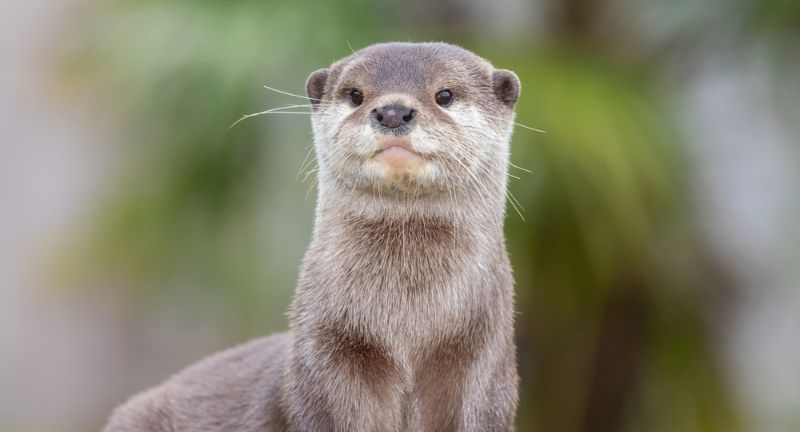
Shutterstock
Otters are known for their exceptional intelligence and problem-solving skills. Their ability to use tools, such as rocks to crack open shellfish, demonstrates advanced thinking. They also exhibit creativity in finding food and navigating their environments. This intelligence is a key factor in their adaptability and survival across various habitats.
Resting Spots
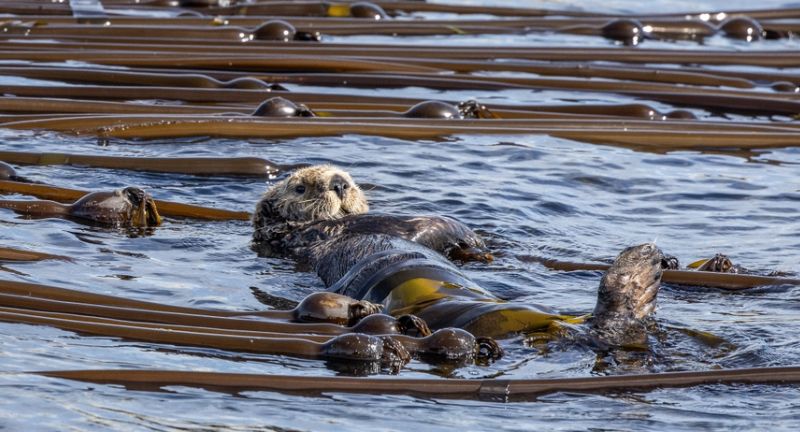
Shutterstock
Sea otters use kelp to anchor themselves while resting, reducing the risk of drifting away in ocean currents. By wrapping themselves in kelp strands, they create a natural tether to their surroundings. This clever behavior allows them to relax without constant movement, conserving energy. It also highlights their resourcefulness and connection to their environment.
Solitary and Social

Shutterstock
River otters tend to be more solitary, often seen alone or in small family units. In contrast, sea otters are highly social, forming large groups called rafts. These differences highlight the diverse social structures within the otter family. Whether alone or in groups, otters display behaviors suited to their specific habitats and needs.
Incredible Agility

Shutterstock
Otters are not just skilled swimmers—they’re also surprisingly agile on land. They can reach speeds of up to 15 miles per hour when running, allowing them to evade predators. Their strong, muscular bodies and flexible spines give them an edge in mobility. This combination of aquatic and terrestrial agility makes them versatile predators and survivors.
Otter Populations

Shutterstock
There are 13 species of otters worldwide, each with unique characteristics and behaviors. From the giant otters of South America to the small-clawed otters of Asia, their diversity is astounding. These species inhabit a range of ecosystems, from tropical rivers to icy coastal waters. Understanding the differences among these species is crucial for targeted conservation efforts.
Distinctive Smell

Shutterstock
Otters have scent glands that they use to mark their territory and communicate with others. Their scent markings convey information about identity, territory, and even reproductive status. This method of communication helps otters maintain social order and avoid conflicts. It’s an essential part of their behavioral repertoire, particularly in densely populated areas.
Role in Culture

Shutterstock
Otters have been featured in folklore and mythology across cultures, often symbolizing playfulness and curiosity. In Native American stories, otters are considered protectors and bringers of good fortune. Their mischievous behavior makes them a source of inspiration in art and literature. These cultural representations highlight humanity’s fascination with these charismatic animals.
Reproduction Cycles

Shutterstock
Otters typically have one to three pups per litter, and their reproductive cycles vary by species. Mothers are highly protective and dedicate months to raising their young. Pups are born blind and rely entirely on their mothers for survival during their early weeks. This strong parental care ensures the next generation thrives in challenging environments.
Efficient Hunters

Shutterstock
Otters are skilled and efficient hunters, using keen eyesight and a strong sense of touch to locate prey. They often dive deep into rivers or coastal waters to catch fish and shellfish. Some species, like the river otter, use their whiskers to detect vibrations in the water, guiding them to hidden prey. This combination of sensory adaptations and hunting prowess makes them formidable predators in their ecosystems.
Threats

Shutterstock
Otters face numerous threats, including habitat loss, water pollution, and poaching for their luxurious fur. Industrial activities and climate change have further degraded their natural habitats. Overfishing also reduces their food sources, creating additional survival challenges. Despite these threats, conservation efforts have helped stabilize populations in some regions, though more work remains to be done.
Conclusion

Shutterstock
Otters are not only captivating with their playful behavior and social bonds but are also vital players in maintaining healthy ecosystems. Their intelligence, adaptability, and charm make them a favorite among wildlife enthusiasts and conservationists alike. Learning about these remarkable creatures reminds us of the importance of preserving their habitats and supporting efforts to protect them. As we continue to admire their unique traits, we can also appreciate the role they play in the natural world. Otters inspire us to find joy in life’s simple moments while emphasizing the value of biodiversity.
More Amazing Animals+
-


Beyond the Stripes: 25 Intriguing Zebra Facts That’ll Amaze You
-


25 Mythical And Misunderstood Animals
-


20 Rabbit Breeds That Are Just As Unique As They…
-


An Alligator Causing Havoc In Florida Woman’s Yard is Finally…
-


21 Deadliest Animals In North America
-


Danish Royal Life Guards escort duck family to Copenhagen harbor
-


What Makes Anglerfish And Frogfish So Unique?
-


Chandler, Arizona Police Officer Helps Duck and Her Ducklings Cross…
-


Foxy and Fantastic: 24 Reasons to Love These Clever Creatures
-


28 Most Colorful Critters From Around The World
-


Who Knew? 33 Reasons Rats Are the Perfect Pet
-


Elk making a break for the trees.
